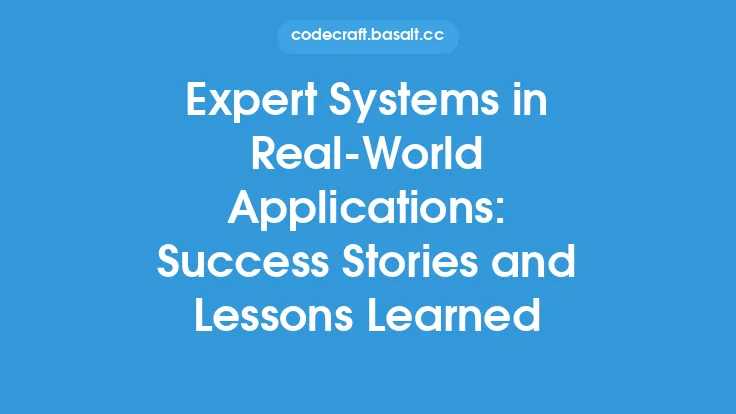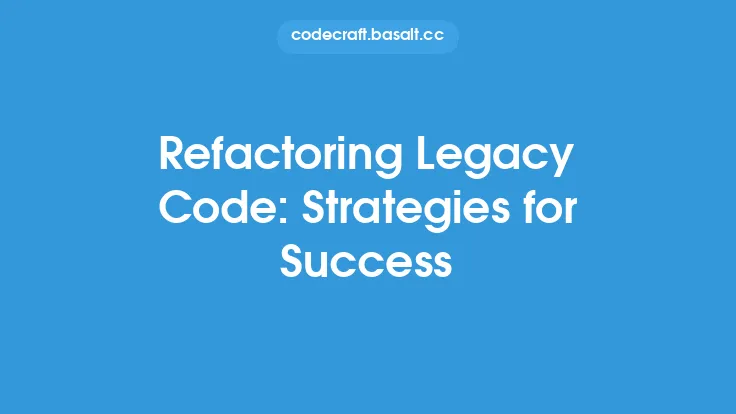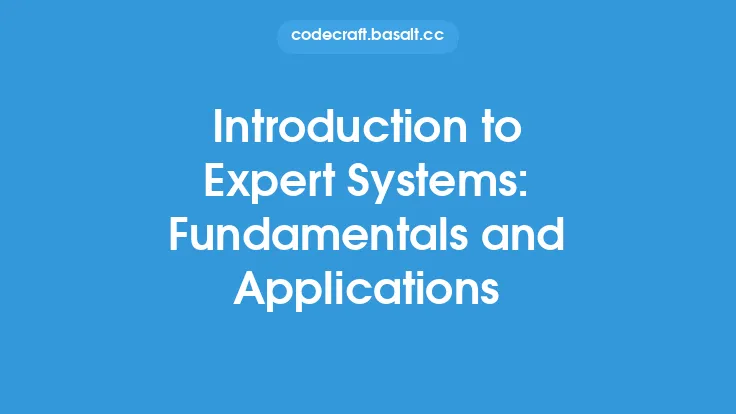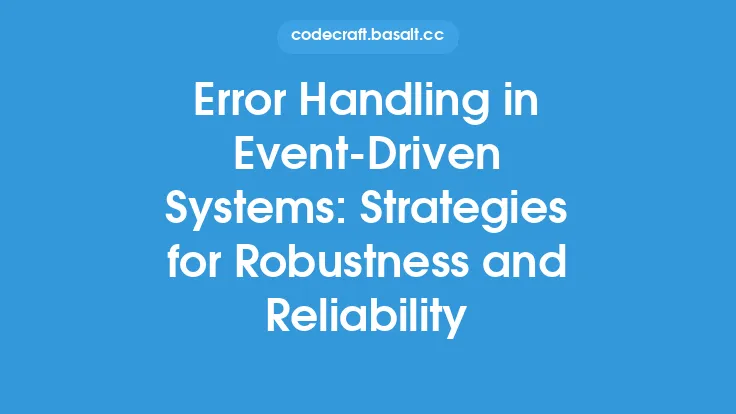Expert systems, a subset of artificial intelligence, are designed to mimic the decision-making abilities of a human expert in a particular domain. These systems rely on a knowledge base and a set of rules to reason and make decisions. However, like any other software system, expert systems require regular maintenance and updates to ensure they continue to perform optimally and remain relevant. In this article, we will delve into the strategies for maintaining and updating expert systems, focusing on the technical aspects and best practices that can ensure long-term success.
Importance of Maintenance and Updates
Regular maintenance and updates are crucial for expert systems to maintain their performance and accuracy. As the domain knowledge and rules evolve, the system must be updated to reflect these changes. Failure to do so can result in decreased system performance, leading to incorrect decisions and potentially harmful consequences. Moreover, updates can also provide opportunities to improve the system's functionality, user interface, and overall user experience. By prioritizing maintenance and updates, organizations can ensure their expert systems remain a valuable asset and continue to provide benefits over time.
Knowledge Base Maintenance
The knowledge base is the core component of an expert system, containing the domain knowledge and rules that drive the system's decision-making process. Maintaining the knowledge base is essential to ensure the system remains accurate and up-to-date. This involves regularly reviewing and updating the knowledge base to reflect changes in the domain, as well as adding new knowledge and rules as they become available. Additionally, the knowledge base should be periodically validated to ensure it remains consistent and accurate. This can be achieved through techniques such as knowledge base verification, which involves checking the knowledge base for inconsistencies and errors, and knowledge base validation, which involves testing the knowledge base against a set of test cases to ensure it produces the expected results.
Rule Base Maintenance
The rule base is another critical component of an expert system, containing the set of rules that are used to reason and make decisions. Maintaining the rule base is essential to ensure the system remains accurate and effective. This involves regularly reviewing and updating the rules to reflect changes in the domain, as well as adding new rules as they become available. Additionally, the rule base should be periodically optimized to improve the system's performance and reduce the risk of errors. This can be achieved through techniques such as rule base refinement, which involves simplifying and optimizing the rules to improve the system's performance, and rule base validation, which involves testing the rules against a set of test cases to ensure they produce the expected results.
Software Maintenance
In addition to maintaining the knowledge base and rule base, expert systems also require regular software maintenance to ensure they continue to function correctly. This involves updating the system's software components, such as the inference engine and user interface, to ensure they remain compatible with the latest operating systems and hardware. Additionally, the system's software should be periodically tested to ensure it remains free from errors and bugs. This can be achieved through techniques such as unit testing, integration testing, and system testing, which involve testing the system's individual components, interactions between components, and overall system functionality, respectively.
Update Strategies
When updating an expert system, it is essential to have a well-planned strategy in place. This involves identifying the updates that are required, prioritizing them based on their importance and urgency, and implementing them in a controlled and systematic manner. Additionally, the updates should be thoroughly tested to ensure they do not introduce any errors or bugs into the system. This can be achieved through techniques such as incremental updates, which involve updating the system in small increments to minimize the risk of errors, and parallel updates, which involve updating the system in parallel with the existing system to ensure continuity of service.
Change Management
Change management is an essential aspect of maintaining and updating expert systems. This involves managing the changes that are made to the system, ensuring they are properly documented and tested, and minimizing the risk of errors and disruptions. Additionally, change management involves communicating the changes to the system's users and stakeholders, ensuring they are aware of the updates and any potential impact on the system's functionality. This can be achieved through techniques such as change control, which involves controlling and managing the changes that are made to the system, and change notification, which involves notifying the system's users and stakeholders of the changes that have been made.
Testing and Validation
Testing and validation are critical components of maintaining and updating expert systems. This involves testing the system to ensure it functions correctly and produces the expected results, as well as validating the system to ensure it meets the required standards and specifications. Additionally, testing and validation involve identifying and addressing any errors or bugs that are found, ensuring the system remains accurate and reliable. This can be achieved through techniques such as black box testing, which involves testing the system's functionality without knowledge of its internal workings, and white box testing, which involves testing the system's internal workings and code.
Best Practices
To ensure the long-term success of an expert system, it is essential to follow best practices for maintenance and updates. This involves prioritizing maintenance and updates, ensuring the system is properly documented and tested, and minimizing the risk of errors and disruptions. Additionally, best practices involve communicating the changes to the system's users and stakeholders, ensuring they are aware of the updates and any potential impact on the system's functionality. By following these best practices, organizations can ensure their expert systems remain a valuable asset and continue to provide benefits over time.
Future Directions
As expert systems continue to evolve and improve, it is essential to consider future directions for maintenance and updates. This involves leveraging emerging technologies, such as artificial intelligence and machine learning, to improve the system's functionality and performance. Additionally, future directions involve developing new techniques and methodologies for maintaining and updating expert systems, ensuring they remain accurate and reliable in an ever-changing environment. By considering these future directions, organizations can ensure their expert systems remain relevant and effective, providing benefits for years to come.





